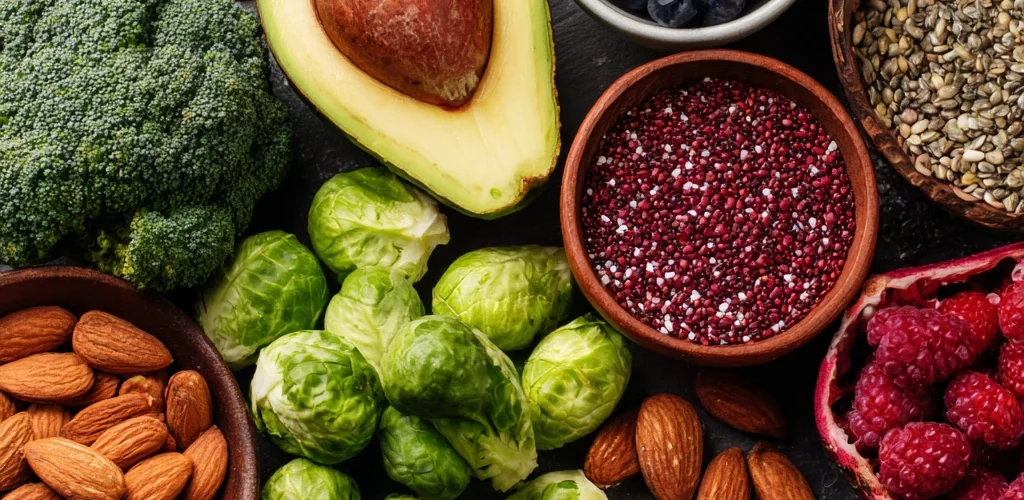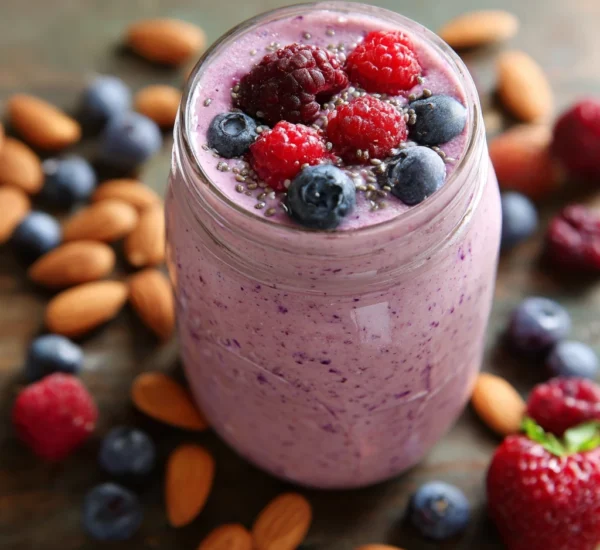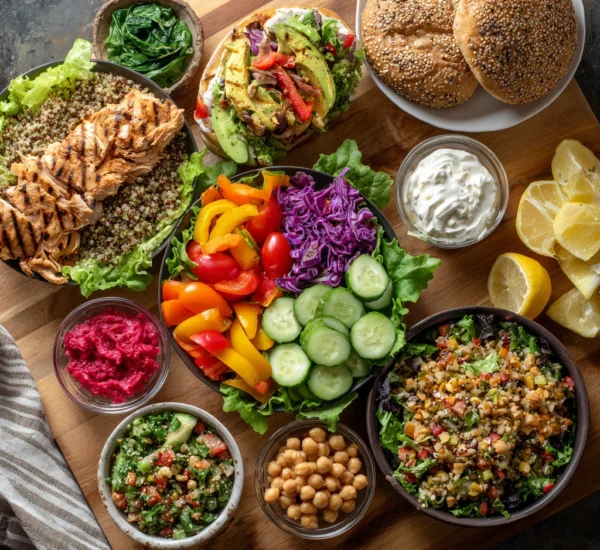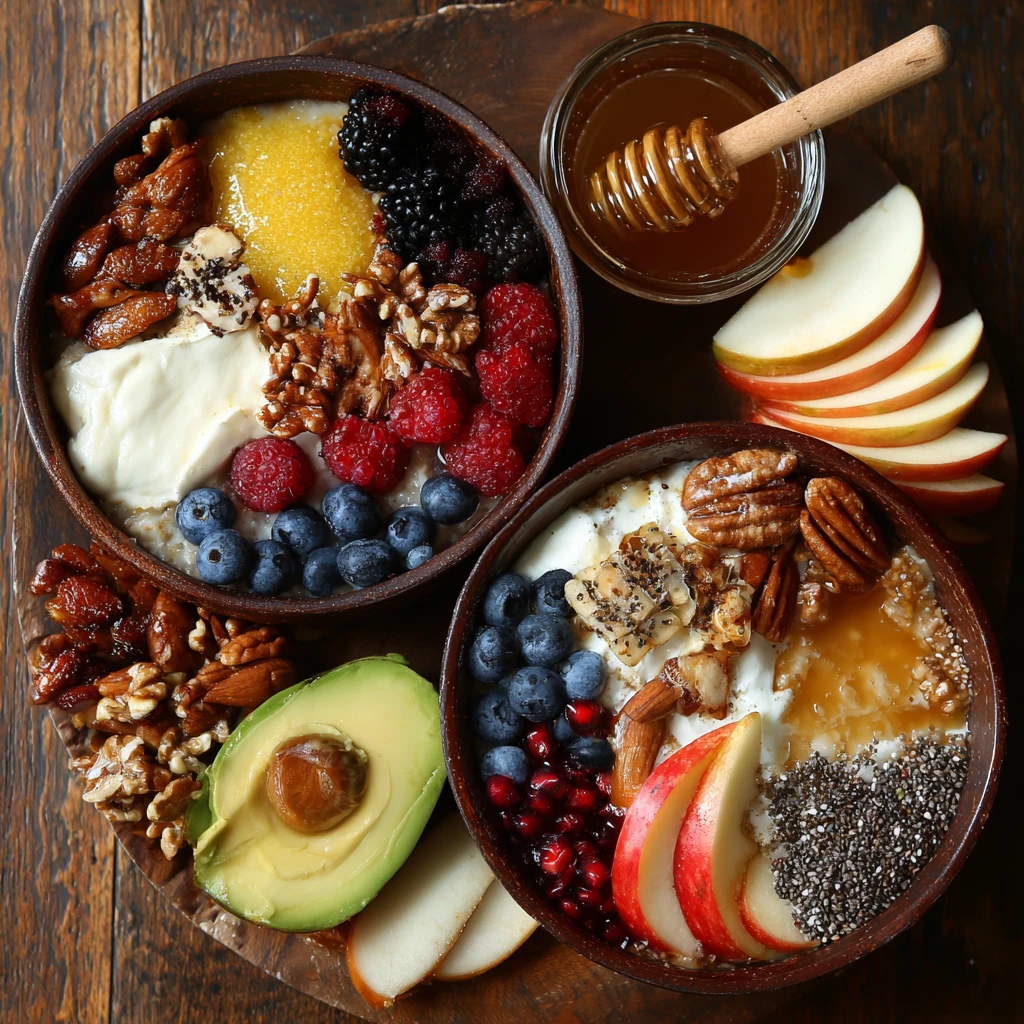Everyday Superfoods to Add to Your Diet
Introduction: Unlock Your Potential with Nature's Powerhouses
In a world saturated with processed foods and quick fixes, it’s easy to overlook the simple yet profound power of whole, natural foods. These aren’t just sources of energy; they’re concentrated packages of vitamins, minerals, antioxidants, and other beneficial compounds that can significantly impact your health and well-being. Integrating “superfoods” into your daily diet is not about following a fad, but rather about nourishing your body with the essential nutrients it needs to thrive. This guide highlights some of the most accessible and effective superfoods you can easily incorporate into your everyday meals. Let’s explore how these nutritional champions can help you achieve optimal health.

Section 1: Berries – Tiny Fruits, Giant Benefits
Berries are nutritional dynamos, packed with antioxidants that combat damage from unstable molecules, or agents, protecting your cells from harm. These small fruits contribute significant benefits to overall health.
Antioxidant Powerhouses
Berries are renowned for their high antioxidant content. Antioxidants combat these agents in the body, reducing the risk of long-term issues. Blueberries, strawberries, raspberries, and blackberries are all excellent sources of these vital nutrients.
Varieties and Their Unique Advantages
Each type of berry offers a unique profile of vitamins and minerals. Blueberries, for example, are rich in manganese and vitamins C and K, while raspberries are a good source of fiber and ellagic acid, a potent antioxidant. Strawberries provide a good dose of vitamin C and folate, and blackberries are packed with vitamin K and manganese.
Simple Ways to Incorporate Berries
Adding berries to your diet is easy and delicious. Sprinkle them on your cereal or yogurt, blend them into smoothies, or enjoy them as a standalone snack. They can also be added to baked goods, such as muffins or pancakes, for a nutritious boost. Frozen berries are just as healthy as fresh ones and can be a more convenient option.
Section 2: Leafy Greens – Your Foundation for Vitality
Leafy greens are nutritional powerhouses, providing a wide array of vitamins, minerals, and fiber with very few calories. They are an essential component of a healthy diet and offer numerous health benefits.
The Importance of Variety
While spinach and kale are well-known, there is a wide variety of leafy greens to explore. Collard greens, Swiss chard, romaine lettuce, and mustard greens each offer a slightly different nutrient profile, so it’s beneficial to include a variety in your diet.
Nutrient Density: Vitamins, Minerals, and Fiber
Leafy greens are loaded with essential vitamins and minerals, including vitamins A, C, and K, as well as folate, calcium, and potassium. They are also a good source of fiber, which aids in digestion and promotes feelings of fullness.
Creative Ways to Eat More Greens
Don’t limit yourself to salads! Leafy greens can be added to smoothies, soups, stews, and stir-fries. You can also sauté them with garlic and olive oil for a quick and easy side dish. For a less obvious way to incorporate them, try adding spinach to sauces or blending kale into pesto.
Section 3: Nuts and Seeds – Small Packages of Big Nutrition
Nuts and seeds are packed with healthy fats, protein, fiber, vitamins, and minerals. These nutritional powerhouses can contribute significantly to overall health when consumed as part of a balanced diet.
Healthy Fats and Heart Health
Nuts and seeds are rich in monounsaturated and polyunsaturated fats, which are beneficial for heart health. These fats can help lower bad elements and raise good elements.
Protein and Fiber for Satiety
Nuts and seeds are also good sources of protein and fiber, which help promote feelings of fullness and satiety. This can be particularly helpful for weight management and preventing overeating.
Versatile Snack Options
Nuts and seeds are convenient and versatile snack options. You can eat them raw, roasted, or added to trail mix, yogurt, or oatmeal. They can also be used in cooking and baking. Try adding chopped nuts to salads, stir-fries, or granola bars. Seeds can be sprinkled on salads, smoothies, or yogurt. Nut butters are also a delicious and nutritious option.
Section 4: Legumes – Plant-Based Protein Power
Legumes, including beans, lentils, and peas, are an excellent source of plant-based protein, fiber, and essential nutrients. They are a versatile and affordable way to boost your health.
Protein and Fiber Abundance
Legumes are packed with both protein and fiber, making them a filling and satisfying food. This combination can help regulate blood values, promote healthy digestion, and aid in weight management.
Essential Nutrients and Minerals
In addition to protein and fiber, legumes are rich in essential nutrients, including iron, folate, potassium, and magnesium. These nutrients are vital for energy production, cell growth, and overall health.
Cooking and Preparation Tips
Legumes can be prepared in a variety of ways. Dried beans and lentils need to be soaked and cooked before consumption, while canned legumes are ready to eat. Add them to soups, stews, salads, or grain bowls. They can also be used to make dips, such as hummus, or vegetarian burgers. Experiment with different types of legumes to find your favorites.

Section 5: Practical Implementation and FAQs
Incorporating superfoods into your diet is not about making drastic changes overnight. It’s about gradually adding these nutrient-rich foods to your existing meals and snacks. Start small, experiment with different recipes, and find what works best for you.
Building a Balanced Diet
Remember that superfoods are just one component of a healthy diet. It’s essential to focus on a balanced intake of fruits, vegetables, whole grains, lean protein, and healthy fats.
Simple Swaps and Additions
Instead of reaching for processed snacks, grab a handful of nuts or berries. Add leafy greens to your salads and smoothies. Incorporate legumes into your meals a few times a week. Small changes can make a big difference.
Addressing Concerns and Misconceptions
Many believe superfoods are exotic and costly, however, everyday choices like berries, beans and greens can contribute to a healthier body. Some assume that superfoods offer immediate results; however, consistency over time is what matters.
Frequently Asked Questions (FAQs)
Q: What exactly are superfoods?
A: Superfoods are nutrient-rich foods that are believed to offer enhanced health benefits due to their high concentrations of vitamins, minerals, antioxidants, and other beneficial compounds.
Q: Can superfoods replace a balanced diet?
A: No, superfoods should not replace a balanced diet. They are meant to complement a healthy eating plan that includes a variety of fruits, vegetables, whole grains, lean protein, and healthy fats.
Q: How much of these superfoods should I eat daily?
A: The amount of superfoods you should eat daily depends on your individual needs and preferences. Aim to incorporate a variety of these foods into your diet regularly. A handful of berries, a serving of leafy greens, a small portion of nuts and seeds, and a serving of legumes are good starting points.
Q: Are frozen berries as nutritious as fresh berries?
A: Yes, frozen berries are often just as nutritious as fresh berries. They are typically frozen soon after harvesting, which helps to preserve their nutrients.
Q: Can superfoods cure diseases?
A: No, superfoods cannot cure diseases. However, they can contribute to overall health and well-being and may help reduce the risk of certain health conditions.
Q: Are there any side effects of eating too many superfoods?
A: While superfoods are generally safe to consume, eating excessive amounts of certain superfoods may cause side effects. For example, consuming too many leafy greens can interfere with blood thinners. It’s best to consume superfoods in moderation as part of a balanced diet.
Q: How can I make superfoods more appealing to children?
A: Get creative with how you present superfoods to children. Add berries to pancakes or yogurt, blend leafy greens into smoothies, or make fun shapes with legume-based snacks. Involve children in the preparation process to make them more likely to try new foods.



